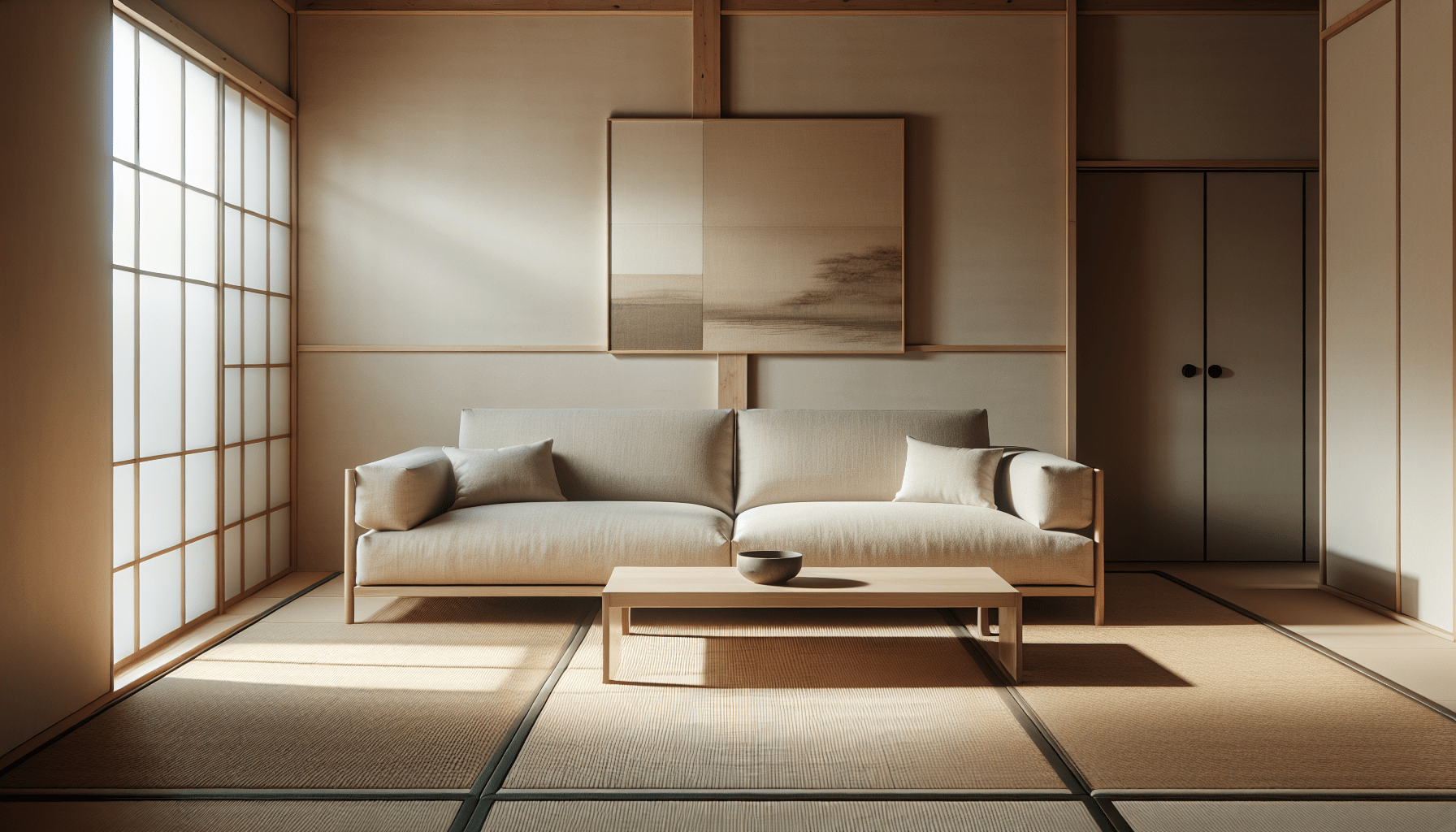What are the essential furniture pieces in a Japandi home? If you’ve been considering how to bring the serene simplicity and elegance of Japandi style into your living space, you’re in the right place! This hybrid design aesthetic merges the minimalism of Japanese design with the warmth of Scandinavian decor. Let’s explore the quintessential furniture pieces that effortlessly blend these two styles, creating a tranquil and inviting haven in your home.
Understanding Japandi Style
Before jumping into the furniture pieces, it’s helpful to understand the core principles of Japandi style. This aesthetic emphasizes simplicity, functionality, and natural materials. You’ll notice a muted color palette, an appreciation for craftsmanship, and an overall sense of calm that invites relaxation.
Key Characteristics
- Minimalism: Less is more in Japandi. Each piece of furniture serves a purpose without excessive adornment.
- Natural Materials: Think wood, stone, and linen. These materials not only feel good but contribute to sustainability.
- Neutral Colors: Soft hues like whites, greys, and muted earth tones create a serene atmosphere.
With these characteristics in mind, let’s look into the essential furniture pieces that define a Japandi home.
Essential Furniture Pieces for Your Japandi Home
1. Low Profile Sofa
A low-profile sofa is a staple in any Japandi living room. These sofas typically feature clean lines and a minimalist aesthetic, making them an ideal foundation for your seating area.
- Why It Matters: The low height encourages a sense of groundedness, which is key in Japanese design.
- Materials to Consider: Opt for natural fabrics like linen or wool, and look for wooden frames to enhance that earthy vibe.
2. Minimalist Coffee Table
The coffee table should serve as a functional centerpiece without overpowering the room. Look for tables that emphasize simplicity in design.
- Design Features: Clean lines and a natural wood finish will keep your space looking airy.
- Functionality: Choose tables with storage options if space allows, as this keeps the clutter at bay.
3. Tatami Mats or Area Rugs
Incorporating tatami mats or natural fiber rugs adds warmth and texture to your home. These elements are quintessential for creating that grounded feel that all Japandi spaces should have.
- Where to Use Them: Place them under your coffee table or in sitting areas to create defined spaces.
- Texture and Pattern: Aim for simple designs that complement the overall aesthetic without drawing too much attention.
4. Dining Table and Chairs
A dining area is crucial in a Japandi home, and the table should reflect a balance between functionality and beauty.
- Material Choices: Solid wood is the preferred material, reflecting both durability and natural beauty.
- Chair Options: Look for chairs that are ergonomic but also align with the overall design principles. Sleek and comfortable designs work best.
5. Storage Solutions
Storage plays a vital role in maintaining the minimalist ethos of Japandi style. Look for smart solutions that blend with your decor.
- Types of Storage: Consider low cabinets, sideboards, or shelving units that are close to the ground.
- Integration with Design: Ensure that storage pieces continue the theme of simplicity with subtle, clean lines.
6. Platform Bed
When it comes to the bedroom, a platform bed embodies the Japandi style beautifully. Their low profiles champion a sense of serenity and simplicity.
- Material and Color: Use natural wood or neutral upholstered beds to maintain cohesion with the rest of the home.
- Bedding: Choose simple, textured bedding that complements the furniture without overwhelming the space.
7. Accent Chairs
Adding an accent chair or two can provide additional seating while enhancing the aesthetic of your living room or reading nook.
- Design Considerations: Look for chairs that exhibit Scandinavian comfort paired with Japanese elegance—think organic shapes and natural colors.
- Placement Tips: Position them near the sofa or by a window to create cozy conversation areas.
8. Work Desk
In today’s world, creating a functional workspace in your home is more important than ever. A work desk that adheres to Japandi principles can help foster productivity.
- Design Elements: Keep it simple with clean lines, and ensure it’s made of natural materials.
- Functionality: Incorporate hidden storage options to keep your workspace clutter-free.
9. Shelving Units
Open shelving can effectively display your valued possessions while maintaining a clean look that is essential to Japandi design.
- Materials: Use wood or metal, but keep the finish natural and understated.
- Decor Suggestions: Incorporate plants, books, or handcrafted items to personalize your shelves while maintaining functionality.
10. Lighting Fixtures
Effective lighting can enhance the atmosphere of your Japandi home. Look for fixtures that are both functional and aesthetically pleasing.
- Style and Material: Consider pendant lights made of bamboo or linen lampshades for a soft glow that complements your space.
- Layered Lighting: Use a mix of ambient, task, and accent lighting to create a balanced and inviting environment.
Accessorizing Your Japandi Home
Having the right furniture is just the beginning. Accessories play a crucial role in bringing your Japandi home to life.
Natural Textiles
Using cotton, linen, or wool throws and cushions can add comfort while maintaining the natural aesthetic.
- Color Palette: Stick to muted tones that reflect the rest of your decor.
Houseplants
Incorporating greenery can invigorate your space while connecting you to nature, an important aspect of Japandi design.
- Plant Suggestions: Opt for low-maintenance varieties like succulents or snake plants for easy care.
Decorative Objects
Personalizing your space with unique, hand-crafted objects can reflect your personality while keeping the minimalist theme intact.
- Tips on Selection: Choose fewer, carefully selected pieces that captivate attention without cluttering your space.
Creating a Cohesive Japandi Look
To achieve that harmonious Japandi aesthetic, it’s essential to ensure all pieces are cohesive. Here are a few tips:
Connect the Dots with Colors
Stick to a unified color palette throughout your home. Neutrals, soft earth tones, and subtle hues can create a flow from room to room.
Focus on Functionality
Ensure that every piece has a purpose. Avoid items that merely serve decorative purposes to uphold the ethos of simplicity.
Mix and Match
Don’t hesitate to mix different styles within the Japandi genre. Combining Scandinavian elements with Japanese pieces can yield a unique look that still feels cohesive.
Final Thoughts
Designing a Japandi home can be a rewarding journey. By understanding the essential furniture pieces, you can create a space that is not only functional but also aesthetically pleasing. Embrace the beauty of simplicity, prioritize natural materials, and most importantly, soon you’ll find that your home becomes a peaceful retreat that you cherish every day.

